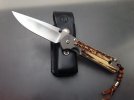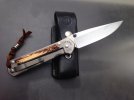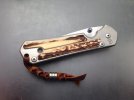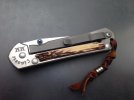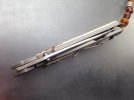on_the_edge
Gold Member
- Joined
- Jan 31, 2006
- Messages
- 11,736
Has anyone ever seen a Sebbie on which the original inlays were replaced by a wood or material that CRK does not offer as inlays, such as osage orange? I'm thinking about it, but am not sure how difficult or practical it would be to change them out. It would certainly make for a unique Sebenza though!

